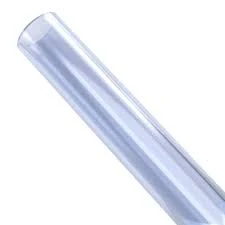Nov . 15, 2024 01:42 Back to list
pvc pipe
The Versatility and Advantages of PVC Pipe
Polyvinyl chloride (PVC) pipe has become an essential material across various industries, renowned for its numerous benefits and adaptability. First introduced in the 1930s, PVC has evolved into one of the most commonly used plastic materials, particularly for piping systems due to its durability, cost-effectiveness, and range of applications. This article will explore the key characteristics that make PVC pipe a preferred choice for many construction and plumbing projects.
Durability and Longevity
One of the most significant advantages of PVC pipe is its exceptional durability. Unlike traditional materials such as metal or concrete, PVC is resistant to corrosion, rust, and chemical damage. This resistance means that PVC pipes can withstand exposure to harsh environmental conditions without deteriorating over time. As a result, they are less likely to require frequent repairs or replacements, making them a cost-effective choice in the long run.
Moreover, PVC pipes are lightweight yet strong, making them easy to handle and transport. This feature significantly reduces installation costs, as they do not require heavy machinery for movement. Additionally, the durability of PVC pipes ensures that they can handle high pressures, which is particularly valuable in various plumbing and irrigation applications.
Flexibility of Applications
The versatility of PVC pipe is another reason for its widespread use. PVC pipes are utilized in a multitude of applications, including residential plumbing, irrigation systems, drainage solutions, and even electrical conduit systems. Their adaptability allows them to be effectively utilized in both above-ground and underground environments.
In residential settings, PVC piping is commonly used for water supply lines and waste disposal systems. Its smooth interior surface minimizes friction, which enhances flow rates and reduces the risk of blockages. In agriculture, PVC pipes play a vital role in irrigation systems, facilitating the efficient delivery of water to crops while minimizing leaks and wastage.
pvc pipe

Cost-Effectiveness
The cost-effectiveness of PVC pipe cannot be overlooked. The manufacturing process of PVC is relatively inexpensive, allowing for competitive pricing in the market. Additionally, due to their longevity and low maintenance requirements, PVC pipes ultimately save consumers money over time. While the initial investment may be comparable to other materials, the overall cost of ownership is significantly reduced due to reduced installation and replacement expenses.
Ease of Installation
The installation of PVC pipe is a straightforward process, which further enhances its appeal. PVC pipes can easily be cut to length with simple tools, and their design allows for straightforward jointing methods, including solvent welding and mechanical fittings. This ease of installation reduces labor costs and can shorten project timelines, making PVC a popular option for contractors and DIY enthusiasts alike.
Environmental Considerations
In recent years, there has been an increased focus on environmental sustainability, and PVC pipes are rising to the occasion. Many manufacturers are implementing practices to reduce the environmental impact of production, such as recycling and using eco-friendly additives. Furthermore, PVC itself is recyclable, which means that end-of-life pipes can be processed and repurposed, contributing to a circular economy.
Conclusion
In summary, the advantages of PVC pipe—its durability, versatility, cost-effectiveness, ease of installation, and environmental considerations—make it a superior choice compared to traditional piping materials. Its use spans across various sectors, from residential and commercial construction to agriculture and industry. As we continue to innovate and seek sustainable solutions, PVC pipe will likely remain a staple in the construction and plumbing industries for years to come. With its outstanding properties and extensive applications, it's clear that PVC pipe is not just a choice but an essential element of modern infrastructure.
-
High-Quality HDPE Sheet | Durable Plastic Panels
NewsAug.06,2025
-
High-Precision PVC Rigid Sheets for Vacuum Forming | AI-Optimized
NewsAug.05,2025
-
Durable PVC-M Water Supply Pipes | 60-Year Life
NewsAug.04,2025
-
Premium HDPE Water Supply Pipes: Durable & Leak-Proof
NewsAug.03,2025
-
Premium PVC-M Water Supply Pipe - Durable & Efficient
NewsAug.02,2025
-
HDPE Drainage & Irrigation Pipe - Durable, Efficient Solutions
NewsAug.01,2025

